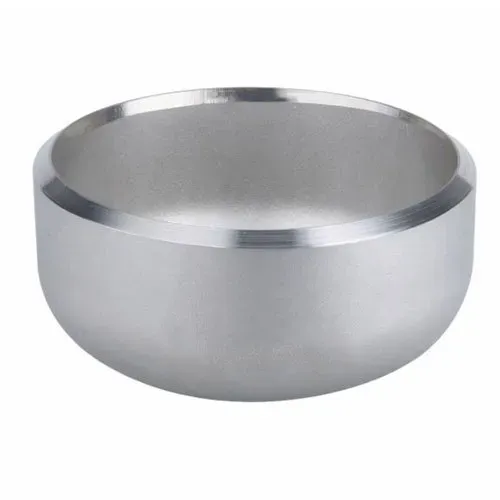-
Cangzhou Yulong Steel Co., Ltd.
-
Phone:
+86 13303177267 -
Email:
admin@ylsteelfittings.com
- English
- Arabic
- Italian
- Spanish
- Portuguese
- German
- kazakh
- Persian
- Greek
- French
- Russian
- Polish
- Thai
- Indonesian
- Vietnamese
- Zulu
- Korean
- Uzbek
- Hindi
- Serbian
- Malay
- Ukrainian
- Gujarati
- Haitian Creole
- hausa
- hawaiian
- Hebrew
- Miao
- Hungarian
- Icelandic
- igbo
- irish
- Japanese
- Javanese
- Kannada
- Khmer
- Rwandese
- Afrikaans
- Albanian
- Amharic
- Armenian
- Azerbaijani
- Basque
- Belarusian
- Bengali
- Bosnian
- Bulgarian
- Catalan
- Cebuano
- China
- China (Taiwan)
- Corsican
- Croatian
- Czech
- Danish
- Esperanto
- Estonian
- Finnish
- Frisian
- Galician
- Georgian
- Kurdish
- Kyrgyz
- Lao
- Latin
- Latvian
- Lithuanian
- Luxembourgish
- Macedonian
- Malgashi
- Malayalam
- Maltese
- Maori
- Marathi
- Mongolian
- Myanmar
- Nepali
- Norwegian
- Norwegian
- Occitan
- Pashto
- Dutch
- Punjabi
- Romanian
- Samoan
- Scottish Gaelic
- Sesotho
- Shona
- Sindhi
- Sinhala
- Slovak
- Slovenian
- Somali
- Sundanese
- Swahili
- Swedish
- Tagalog
- Tajik
- Tamil
- Tatar
- Telugu
- Turkish
- Turkmen
- Urdu
- Uighur
- Welsh
- Bantu
- Yiddish
- Yoruba

Dec . 20, 2024 10:57 Back to list
din 2566 flange
Understanding DIN 2566 Flanges A Comprehensive Overview
In the world of industrial piping, flanges play a crucial role in connecting different sections of pipes, valves, pumps, and other equipment. Among the various standards of flanges, DIN 2566 is one that stands out due to its design, usability, and widespread acceptance in numerous industries, especially in Europe. This article explores the features, applications, and manufacturing aspects of DIN 2566 flanges, providing a thorough understanding of their significance in modern engineering.
What is DIN 2566?
DIN 2566 refers to a specific standard for raised face flanges as outlined by the Deutsches Institut für Normung (DIN), the German Institute for Standardization. These flanges are typically used in low-pressure applications and are characterized by their unique designs, which often feature a raised surface around the pipe bore. This design allows for better sealing capabilities when gaskets are applied, which is essential for preventing leaks in piping systems.
The flange dimensions, including diameter, thickness, and bolt hole specifications, are meticulously defined within the DIN 2566 standard. This ensures that components are compatible and interchangeable, facilitating easier installation and maintenance. The standard encompasses various sizes, from smaller diameters suitable for light applications to larger sizes designed for heavier industrial use.
Key Features
1. Material Composition DIN 2566 flanges are manufactured from a variety of materials, including carbon steel, stainless steel, and alloy steel. The choice of material often depends on the specific application requirements, such as resistance to corrosion, high temperatures, or pressure.
2. Design Variations While the standard flanges are typically circular, DIN 2566 also includes variations like welding neck flanges and slip-on flanges, which offer additional flexibility depending on integration needs and application scenarios.
3. Performance under Pressure The design of DIN 2566 flanges allows them to effectively handle a range of pressures, making them suitable for various applications in industries such as petrochemical, water treatment, and food processing.
4. Ease of Maintenance and Replacement Since DIN 2566 flanges are standardized, maintenance and replacement are straightforward. This is particularly advantageous in industries where downtime needs to be minimized.
Applications of DIN 2566 Flanges
din 2566 flange

DIN 2566 flanges find their application across a broad spectrum of industries
- Oil and Gas They are frequently used in exploration and production facilities, where reliable sealing is paramount to prevent leaks.
- Water Supply Systems In municipal water supply networks, DIN 2566 flanges provide the necessary connections between pipelines, ensuring consistent water flow and pressure management.
- Chemical Processing These flanges are critical in chemical plants, where the integrity of the connections must withstand various chemicals and high temperatures.
- Power Generation In power plants, DIN 2566 flanges are utilized in both steam and gas pipelines, reinforcing the safety and efficiency of energy production.
Manufacturing Considerations
The manufacturing of DIN 2566 flanges requires precision and adherence to strict quality standards. The production process typically involves forging or casting methods, followed by machining to achieve the precise dimensions stipulated in the DIN standard. Manufacturers also conduct rigorous testing, including pressure tests, to ensure that each flange can perform safely under operational conditions.
Moreover, modern manufacturing techniques utilize advanced technologies such as computer-aided design (CAD) and numerical control (NC) machining, which enhance the accuracy and consistency of produced flanges. This technological advancement has allowed for the production of flanges that meet or exceed the expected performance metrics set by the DIN standard.
Conclusion
DIN 2566 flanges are a vital component in many industrial applications, providing essential connections that maintain the integrity of piping systems. Their standardized design, combined with a variety of materials and configurations, ensures their versatility and reliability. As industries continue to evolve and demand higher efficiency and safety standards, the role of DIN 2566 flanges will remain significant in the effort to achieve optimal performance in piping and connections. For engineers and procurement professionals, understanding the characteristics and applications of DIN 2566 flanges is key to making informed decisions that contribute to the success of their projects.
Latest news
-
ANSI 150P SS304 SO FLANGE
NewsFeb.14,2025
-
ASTM A333GR6 STEEL PIPE
NewsJan.20,2025
-
ANSI B16.5 WELDING NECK FLANGE
NewsJan.15,2026
-
ANSI B16.5 SLIP-ON FLANGE
NewsApr.19,2024
-
SABS 1123 FLANGE
NewsJan.15,2025
-
DIN86044 PLATE FLANGE
NewsApr.19,2024
-
DIN2527 BLIND FLANGE
NewsApr.12,2024
-
JIS B2311 Butt-Welding Fittings LR/SR 45°/90° /180°Seamless/Weld
NewsApr.23,2024











